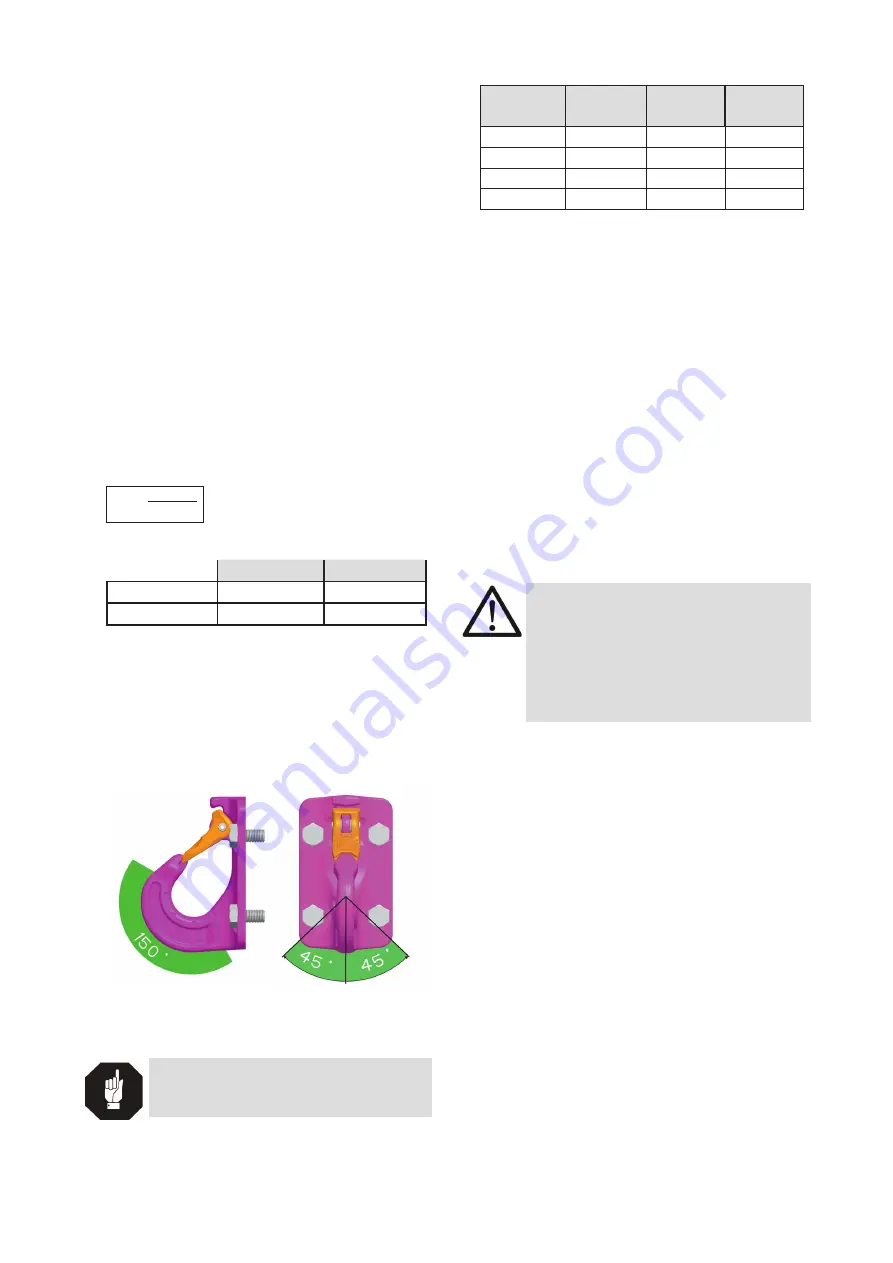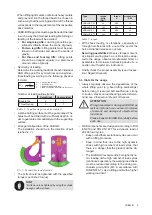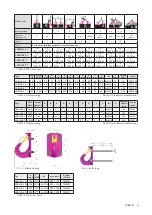
3
VABH-B
When lifting light metals, nonferrous heavy metals
and gray cast iron the thread has to be chosen in
such a way that the working load limit of the thread
corresponds to the requirements of the respective
base material.
• VABH-B lifting points must be positioned at the load
in such a way that improper loading like turning or
twisting of the load will be avoided:
• For single leg lifts:
Load ring should be po-
sitioned vertically above the centre of gravity.
• For two leg lifts:
Lifting points must be posi-
tioned on both sides and above the centre of
gravity.
• For three and four leg lifts:
Lifting points
should be arranged equally in a plain level
around centre of gravity
• Symmetry of loading:
Determine the working load limit of each individual
RUD lifting point for symmetrical and unsymme-
trical loading according to the following physical
formula:
W
LL
= working load limit (kg)
G
= load weight (kg)
n = number of load bearing legs
ß
= angle of inclination of the chain to the vertical
W
LL
=
G
n x cos ß
Number of load bearing strands:
Symetrical
Unsymetrical
Double leg
2
1
Three/four leg
3
1
Table 1: Load bearing strands (see table 3)
• A plane bolting surface must be guaranteed. The
holes must be drilled with a sufficient depth in or
-
der to guarantee compatibility with the supporting
surface.
• Arrangement/position of the VABH-B:
The installation should be in the direction of pull
(siehe
Pic. 1)
.
Pic. 1: Permissible load direction
•
The bolts should be tightened with the specified
torque (see
Table 2 torque
).
HINT
* Bolts have to be tightend by using the outside
hexagon with a wrench.
Type
torque
bolts
[Nm] *
thread
d
wrench size
SW
VABH-B 1.5 t
55
M10
16
VABH-B 2.5 t
100
M12
18
VABH-B 4 t
240
M16
24
VABH-B 6.7 t
450
M20
30
Table 2: torque
• With shock loading or vibrations, especially at
through hole fixtures with a nut at the end of the
bolt, accidential release can occure.
Securing possibilities:
Observe torque moment,
use liquid securing glue f.e. Loctite (can be adap-
ted to the usage, observe manufacturer hints) or
assemble a form closure bolt locking device f.e. a
castle nut with cotter pin, locknut etc.
• Finally check the proper assembly (see
4 Inspec-
tion / Repair / Disposal).
3.3 Hints for the usage
• Always regularly observe the appearance of the
whole lifting point (e.g. fixed lifting point/slings)
before using it (secured bolt seat/torque, strong
corrosion, cracks on load-bearing parts, deforma-
tions) see
4 Inspection / Repair / Disposal
.
ATTENTION
Wrong assembled or damaged VABH-B as
well as improper use can lead to injuries
of persons and damage of objects when
load drops.
Please inspect all VABH-B carefully before
each use.
• RUD components are designed according to DIN
EN 818 and DIN EN 1677 for a dynamic load of
20,000 load cycles.
• Keep in mind that several load cycles can occur
with a lifting procedure.
• Keep in mind that, due to the high dynamic
stress with high numbers of load cycles, that
there is a danger that the product will be da-
maged.
• The BG/DGUV recommends: For higher dyna-
mic loading with a high number of load cycles
(continuous operation), the working load stress
must be reduced according to the driving me-
chanism group 1Bm (M3 in accordance with
DIN EN 818-7). Use a lifting point with a higher
working load limit.























